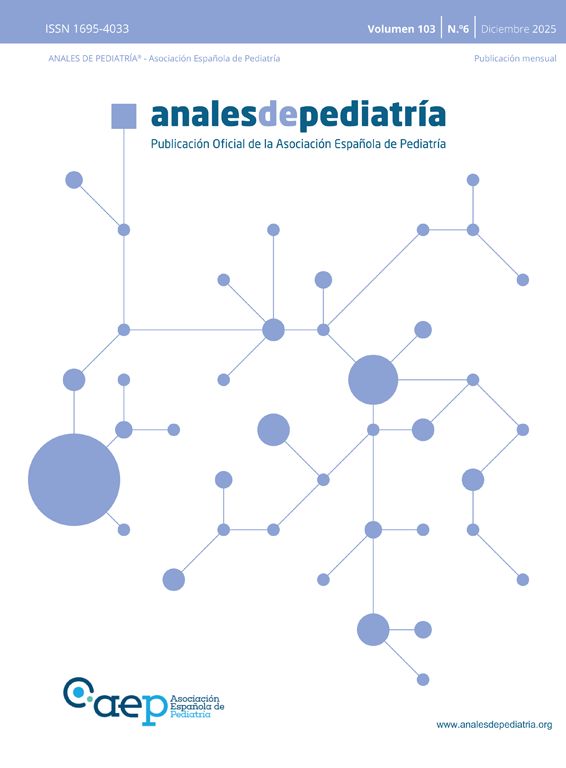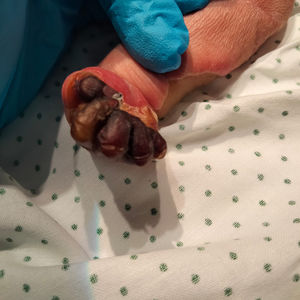We present the case of a term neonate with Frieden’s type 7 aplasia cutis congenita in the right upper extremity (Fig. 1). The lesion, measuring 9.5 × 5.5 cm, was characterized by absence of skin in the medial surface of the forearm and the back of the hand with distal necrosis from the metacarpophalangeal joints and decreased vitality (Fig. 2). The Doppler ultrasound showed absence of a cubital pulse, while the findings of plain radiography ruled out bone agenesis. Other relevant findings were mild ventriculomegaly and nephrocalcinosis. The results of clinical exome sequencing were negative. The patient underwent distal transradial amputation as definitive treatment (Fig. 3), and the diagnosis was confirmed by the histopathological findings. The patient is currently in rehabilitation.
Aplasia cutis congenita, characterized by the agenesis of the epidermis and dermis, chiefly affects the scalp, and involvement of the extremities is rare. It may be sporadic, associated with amniotic bands, or occur in the context of a syndrome, in association with variants in genes such as BMS1 and DLL4. Environmental factors, such as fetal ischemia or intrauterine exposure to toxic substances or medicines such as metamizole or misoprostol, are also associated with this condition. The transradial amputation approach optimizes the functionality of the prosthesis.1–3 This case underscores the importance of a multidisciplinary approach and the investigation of genetic and environmental causes. Prolonged follow-up is recommended to assess the functioning of the myoelectric prosthesis and quality of life.









